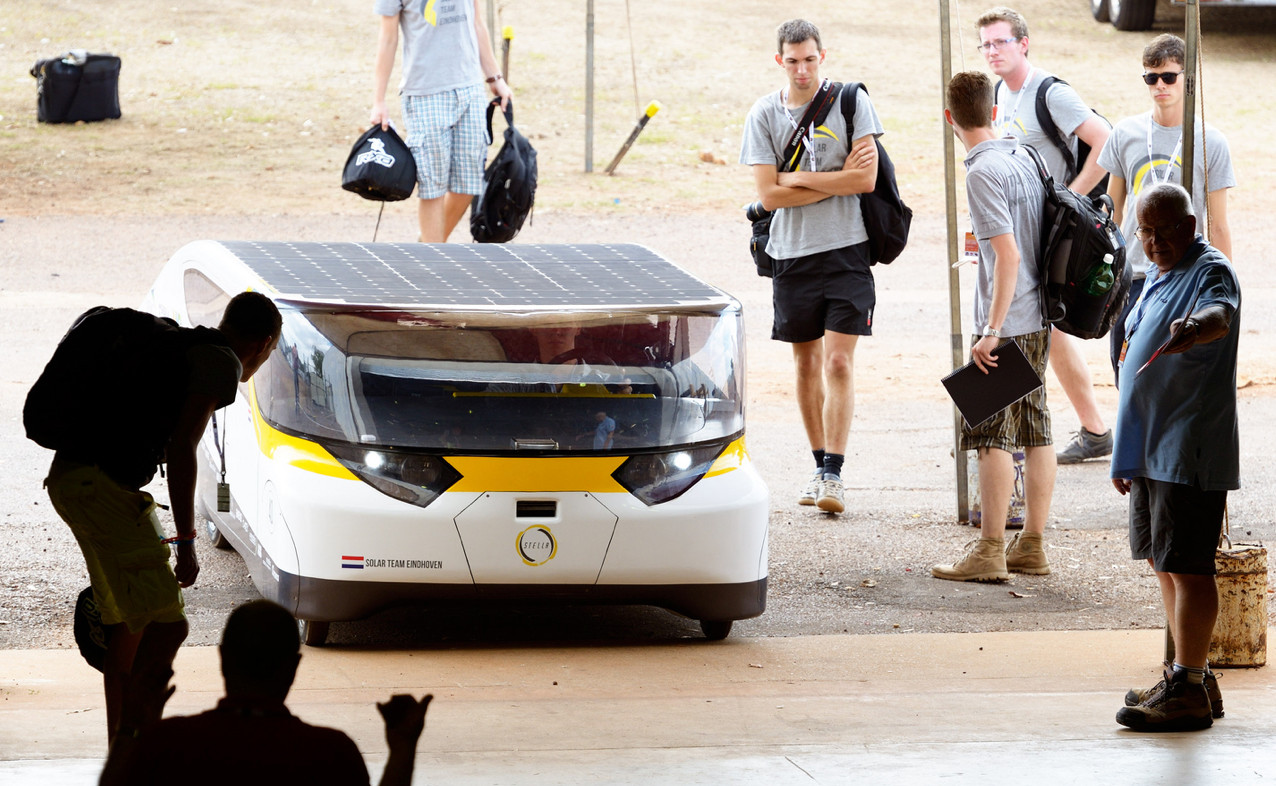Stella Solar Car

In 2012 a group of students at Eindhoven University of Technology decided to participate in the Michelin Cruiser Class of the Bridgestone World Solar Challenge 2013 to be held in Australia. The goal was to build a solar powered family car capable to transport four persons and some luggage in a comfortable way. The car was named Stella. The challenge took place from Darwin to Adelaide, approximately 3000 kilometers straight through the Australian desert. The winner was determined by a complex set of criteria, based on the travel time, the number of passengers, the extra electricity required during the race, and the practicality of the car. In a field with quite fierce competition the team from Eindhoven stood out by winning the challenge.
The approach to the software was quite unique for this kind of projects. Directly from the beginning a formal design of the architecture of the software was written down in mCRL2 and its correct functioning was established by verifying a large set of modal properties.
This had two effects. The first one was that it forced those groups responsible for the hardware (batteries, motor, solar-cells, console) to think about their software interfaces in an early phase of the project. The second effect was that when it came to the actual programming of the software, this was a relatively effortless undertaking and finished on time. No serious problems were encountered in the software after finishing it.
An interesting observation was that other cars required reset buttons to overcome the unreliability of their software, which were not needed in Stella. There was also a minor incident with melting electrical wires. Due to the software this was reported immediately to the trailing car, and the problem could be resolved on the go. As one of the team members observed: “It is hard to know whether the quality of the software was crucial in winning this race, but it was certainly a contributing factor”.
Technical details
A model of the behavioural software architecture was described in mCRL2. A set of essential correctness requirements were formulated which were translated in the modal mu-Calculus with data. Both the formulas and the architecture went through a series of adaptations and improvements until the model became stable. The final model had 50 levels, 553.616 states and 4.829.764 transitions. After reduction modulo branching bisimulation, this reduced to only 14.192 states and 130.016 transitions.
- Type of verification
Deadlock, reachability and safety properties were either validated by explicit state-space generation (breadth-first search) or translated to modal formulae which were subsequently verified.
- Equipment (computers, CPU, RAM)
The verification was done on a linux machine with 1Tbyte of main memory (Mammoth at Eindhoven University of Technology). State space generation could be done on regular 8Gbyte main memory laptop.
- Models
The models and the architecture are confidential (as they might be interesting to the competition in the next World Solar Challenge).
- Organizational context
- Contact person:
Maikel Leemans, Student of the Master Computer Science and Engineering, Eindhoven University of Technology, The Netherlands.
- Institution:
Eindhoven University of Technology, The Netherlands.
- Time period:
The project was started in October 2012 and finished in Juli 2013.